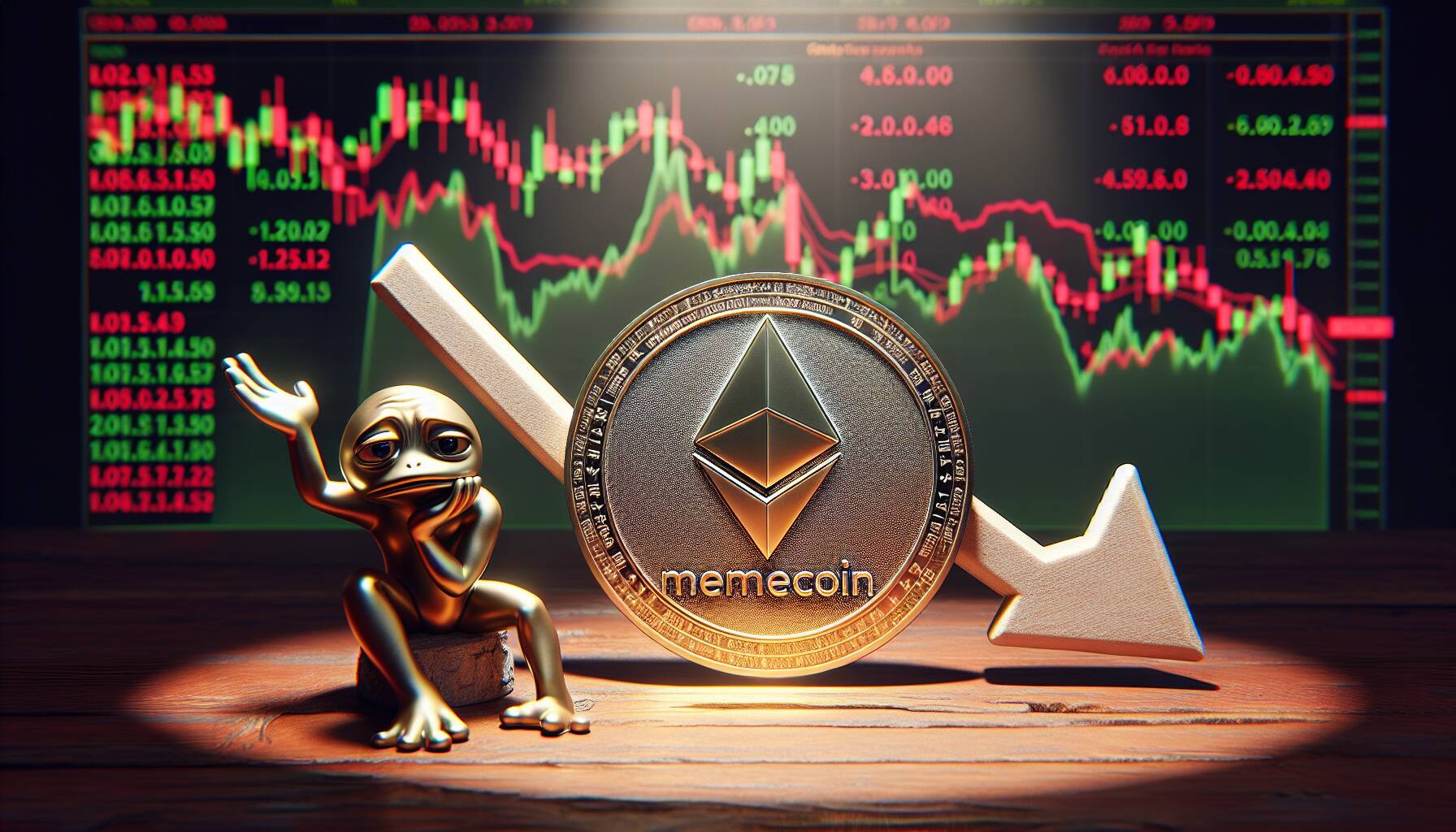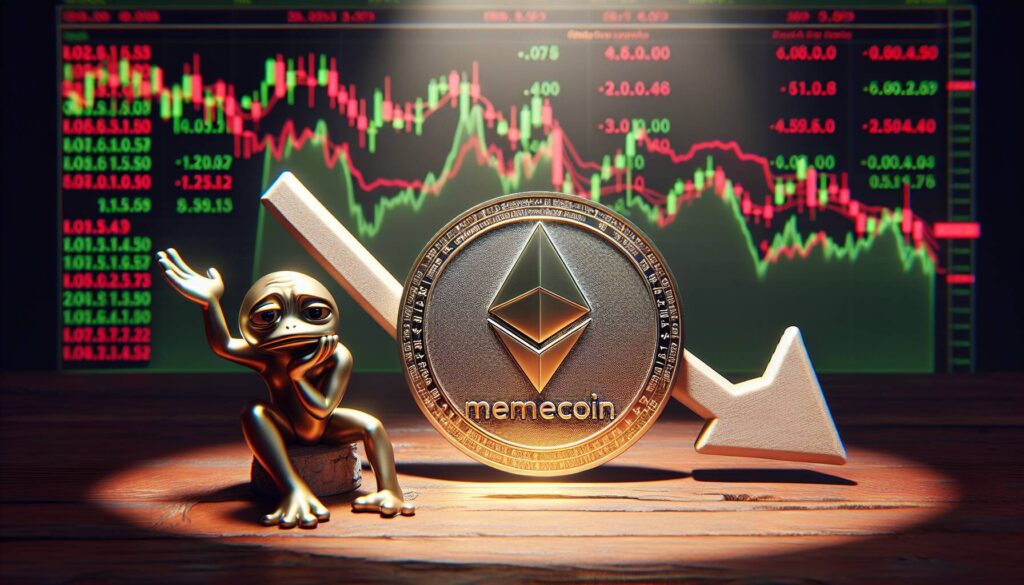Pepe (PEPE), the beloved frog-themed memecoin that captivated the cryptocurrency world earlier this year, has recently experienced a slight downturn, falling approximately 4% in the last 24 hours. This decline marks a broader trend in the memecoin sector, which has seen a 3% drop according to the CoinDesk Memecoin Index (CDMEME), falling behind the wider cryptocurrency market that only lost 0.1% as tracked by the CoinDesk 20 (CD20) index.
Despite this recent dip, the enthusiasm among prominent investors, known as “whales,” continues to flourish. Data from Nansen reveals that the top 100 PEPE addresses on the Ethereum network have increased their holdings by 1.5% over the past month. In contrast, the amount of PEPE available on exchanges has decreased by 0.5%, suggesting a growing confidence among long-term holders.
“PEPE traded within a narrow range of $0.0000081 during the past day, highlighting a 7% spread between its peak and low prices,” notes CoinDesk Research’s technical analysis.
The peak price reached $0.0000126621, but it faced significant selling pressure each time it tried to break above the $0.000012 mark. Currently, PEPE is oscillating around critical support levels, having settled at $0.0000118 after testing grounds of support near $0.0000118094. This tight consolidation between $0.00001181 and $0.00001198 indicates a period of indecision among traders, reflecting the uncertainty that has permeated the market.
As the trading day concludes, the decrease in volume suggests that buyer enthusiasm is waning compared to earlier this week, with many looking closely to see if the token can regain its footing above the $0.000012 resistance zone. If not, it may face challenges in avoiding a retreat to lower support thresholds.

Pepe Memecoin Market Overview
The following key points outline the current status and impact of the Pepe memecoin (PEPE) and the broader memecoin market:
- Decline in Value:
- PEPE fell approximately 4% in the past 24 hours.
- The overall memecoin market saw a 3% decline, underperforming compared to the wider market’s 0.1% loss.
- Trading Activity Cooling:
- Trading activity within the memecoin sector has decreased from earlier highs this week.
- Whale Accumulation:
- Top 100 PEPE addresses increased holdings by 1.5% over the past 30 days.
- PEPE held on exchanges dropped by 0.5% in the same period.
- Technical Analysis:
- PEPE traded within a $0.0000081 range, with a notable 7% spread between high and low prices.
- Initial peak reached $0.0000126621, but faced significant selling pressure above this level.
- Critical support tested around $0.0000118094, with closing price at $0.0000118 indicating distribution pressure.
- Consolidation between $0.00001181 and $0.00001198 reflects market indecision.
- Market Momentum:
- Volume patterns suggest decreasing buyer strength, limiting potential for a sustained upside breakout without new catalysts.
The current trends and fluctuations in the PEPE meme market could impact investor sentiment and trading strategies significantly.
Comparative Analysis of Pepe (PEPE) Memecoin Dynamics
The recent downturn of Pepe (PEPE), a memecoin that initially captured significant attention, showcases the challenges faced within the volatile landscape of the cryptocurrency market. As trading activities in the memecoin sector have slowed, PEPE’s 4% decline reflects a broader trend seen across similar assets, with the CoinDesk Memecoin Index revealing a 3% drop. This contrast to the more stable 0.1% loss of the wider market indicates a notable apprehension among investors specifically in the meme-based token sphere.
One of the competitive advantages for PEPE lies in the ongoing whale accumulation, which hints at potential long-term support. The increase of 1.5% in holdings among the top 100 addresses on Ethereum could bolster confidence in the asset, suggesting that experienced traders may still see value where retail sentiment wavers. However, this accumulation could also create issues for new investors who may find themselves at a disadvantage against more knowledgeable players, especially as trading volumes decline.
In terms of market dynamics, PEPE is competing with other memecoins that might not have a similar backing from whale investors, which can exacerbate volatility for those without such support. For instance, tokens that fail to attract significant holders may face sharper declines as selling pressure intensifies. This can place new entrants at risk of larger losses if they are unable to navigate the technical barriers presented by established players.
Moreover, the current technical analysis indicates a precarious situation for PEPE, as it has tested critical support levels and showcases indecision among traders. The tight trading channel suggests a stagnation that could discourage potential investors looking for momentum. Unless a fresh catalyst emerges to drive interest, PEPE may continue to struggle, which would primarily affect those looking to enter the market or expand their holdings within the memecoin category.
Ultimately, while the presence of whale investors provides a veil of security for PEPE, the fluctuating market sentiment poses risks that could deter new investors and create a challenging environment for sustained growth. Any traders operating in this volatile space must thus remain vigilant and proactive in their strategies to mitigate potential downsides.”















